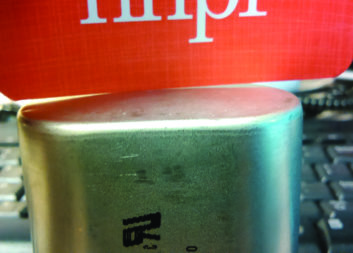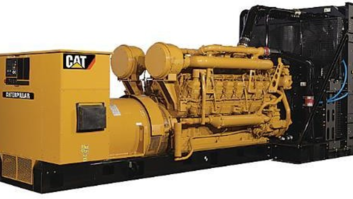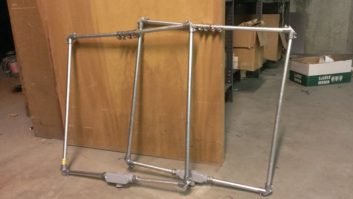
Our mention of the Ion Trap magnet (March 13 column) brought back some very old memories for a number of readers.
NHPR’s Stephanie Donnell, WA1YKL, wrote that she had not even heard the term “picture tube” in many years. She also recalled a thing called a “purity ring,” used on color picture tubes. And if you have a weak CRT, Stephanie still has a B&K CRT Rejuvenator.
Stephanie shared another story of interest about an old Ferrups UPS, on which the AC output had died. The only logged fault displayed was “Low AC Output.” After checking for the usual things like fuses and signs of damage or burns, she called Eaton Tech Support, who recommended she check the tank cap.
It took Stephanie a second, but she quickly realized this was the large, nonpolarized electrolytic capacitor that made up a resonant “tank,” along with the additional secondary winding on the AC power transformer. With the UPS switched off and unplugged and with the capacitor disconnected, Stephanie attempted to check the capacitor and saw that it was shorted. A quick inspection of the capacitor did not reveal anything unusual, and there wasn’t any leakage.
What she saw when setting the capacitor top on a flat surface was a very noticeable wobble. The top of the new replacement capacitor was very stable. Checking against a business card (see Fig. 1) revealed a subtle outward bulge in the otherwise flat surface.
While this was far less noticeable than what has been seen with electrolytic capacitors when they have similarly failed, it provided further proof of the condition of the capacitor. A new 10 uF 660V capacitor was ordered from Eaton, installed and the UPS was back in operation.
This issue with the UPS brought back some of the things recalled about power supply regulators. The old UPS uses a “ferro-resonant” or what is sometimes called a “constant voltage” transformer, kind of an ugly stepchild of power supplies. Their regulation is based on the resonance of an extra secondary winding in the transformer, and the capacitor that is connected to it. The capacitor and the extra secondary form a resonant tank circuit that works in conjunction with the AC Line frequency. Their efficiency is often quite low, compared to other power supply designs. But one advantage is that they are very simple.
***
Broadcast engineer and Radio World colleague Dan Slentz has been surfing the web again and found more useful sites.
Formerly expensive Digital Audio Workstation Cakewalk software is now free. It’s good for mixing music (CDs and albums), allowing you to compose, record and then edit material. Here’s the site to visit: www.bandlab.com/products/cakewalk.
And here’s a novel reason to become associated with an educational facility or nonprofit. AutoDesk, maker of AutoCAD drawing/drafting software, offers their full software suite to .edu organizations. This is not a “lite” version but the full-blown AutoCAD, and you can choose any version, including a network-applied version for educational nonprofits.
If you are associated with an .edu, check out this link: www.autodesk.com/education/free-software/autocad.
Dan also suggests Workbench readers take a look at Wireshark. It’s said to be the world’s most widely used network protocol analyzer.
Wireshark lets you see what’s going on in your network at a microscopic level. Its feature set includes deep inspection of hundreds of protocols. Wireshark is multiplatform, running on Windows, MacOS and Linux, along with many other operating systems. Network data can be browsed using a GUI. Wireshark also provides VoIP analysis. A Wireshark user guide can be downloaded from the site: www.wireshark.org.
And Dan’s latest find is the MixerFace R4, a portable two-mic (with phantom power) mixer and mobile recording interface, featuring high-quality mic preamps, High-Z (guitar) inputs and balanced outputs. Dan says that it would work great with a cell phone doing a call-in, or using Cleanfeed. The device lets you record pro-quality audio on your smartphone. An internal long-lasting rechargeable battery makes it ideal for interviews or remotes “on the road.”
It’s manufactured by CEntrance, which has been around for two decades providing products primarily to the music/performing industry. The MixerFace R4 sells for between $349 and $599, depending on options. Here’s the link for more information or to order: https://centrance.com/mixerface.
***
“Thumbs” Feebleman is the editor of the Munn-Reese Broadcast Engineering Consultants e-newsletter (www.munn-reese.com). In a recent issue, Thumbs cautioned owners of new translator construction permits to read the CP thoroughly.
Many new CPs are conditioned with special requirements, like intermodulation and spectral measurements. You may also need to complete a partial proof on a nearby AM array.
Remember, your new translator is licensed under Part 74 of the FCC Rules and Regulations; however, at the very beginning of Part 74 is a paragraph that refers many requirements back to Part 73. Although your translator is licensed under Part 74, it is a Part 73 device!
Questions? Obtain more information by emailing [email protected]. And if your new translator needs a coverage map, email Bruce Bellamy, [email protected].
Radio World’s popular Workbench column relies on your tips and ideas. You’ll help fellow engineers and qualify for SBE recertification credit. Send tips and high-resolution photos to j[email protected].
John Bisset has spent 49 years in the broadcasting industry and is still learning. He handles western U.S. radio sales for the Telos Alliance. He is SBE certified and is a past recipient of the SBE’s Educator of the Year Award.












